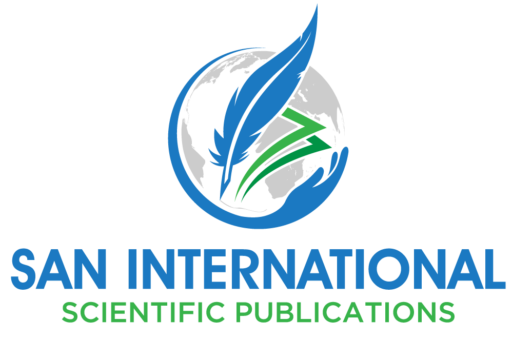Book Title: AI Horizons – Exploring Multidisciplinary Frontiers (Volume 4)
Editors: Dr. Shweta A. Bansal and Dr. Charu Chhabra (PT)
ISBN: 978-81-984464-6-6
Chapter: 2
DOI: https://doi.org/10.59646/aihc2/305
Authors: Aarti Yadav, Paras Singh, Harsh Singh, Bhanu Prakash, Meenu Vijarania, Swati Gupta
Abstract
Electricity consumption directly affects expenses associated with energy delivery, energy management, and the environment. Traditional approaches to power usage prediction are inherently limited in their scalability and accuracy. Power usage may now be reliably predicted from past data thanks to developments in machine learning techniques. Because it directly affects these expenses, electricity usage has a big impact on energy management, the environment, and the cost of energy distribution. The precision and expandability of conventional power consumption prediction algorithms are inherently limit. Advances in machine learning techniques have made it possible to utilize previous data to correctly estimate electricity usage. Steel is used extensively in a variety of industries, such as modern building, transportation, and infrastructure. To fulfil the growing demand for steel and to encourage city development, it is imperative to forecast electricity consumption within the steel industry. Predicting energy consumption of the steel sector is difficult, though, because of a number of variables, including the kind of steel produced, how it is made, and how effective the facility is. By developing a predictive model that assesses electricity usage in the steel sector, this research seeks to make a contribution [2]. The South Korean Company produces a variety of iron, steel, and coil varieties. The Korean Electric Power Corporation website (pccs.kepco.go.kr) has data on the energy use of the sector, we are going to predict the usage in kilowatt per hour which is also our target that is depending on various factors mentioned as features in dataset below. This creative strategy predicts a constant variable associated with power use using linear regression and KNN clustering to determine the sort of challenging workload. One of the new aspect of this work is the creation of a model that provides precise estimates of energy usage in steel sector, resulting in more economical and environmentally friendly operations. The ability of industries to predict and optimize their energy usage is made possible by this research, which promotes more sustainable practices and economic growth.
References
- Reddy, G. V., Aitha, L. J., Poojitha, C., Shreya, A. N., Reddy, D. K., & Meghana, G. S. (2023). Electricity consumption prediction using machine learning. In E3S Web of Conferences (Vol. 391, p. 01048). EDP Sciences.
- VE, S., Shin, C., & Cho, Y. (2021). Efficient energy consumption prediction model for a data analytic-enabled industry building in a smart city. Building Research & Information, 49(1), 127-143.
- Hasanbeigi, A., Price, L., & Lin, E. (2013). Emerging energy-efficiency and CO2 emission-reduction technologies for cement and concrete. Production.
- Worrell, E., Martin, N., & Price, L. (1999). Energy efficiency and carbon dioxide emissions reduction opportunities in the US iron and steel industry. Energy, the International Journal, 26(LBNL-47910).
- He, K., & Wang, L. (2017). A review of energy use and energy-efficient technologies for the iron and steel industry. Renewable and Sustainable Energy Reviews, 70, 1022-1039.
- De Cauwer, C., Van Mierlo, J., & Coosemans, T. (2015). Energy consumption prediction for electric vehicles based on real-world data. Energies, 8(8), 8573-8593.
- Le, T., Vo, M. T., Vo, B., Hwang, E., Rho, S., & Baik, S. W. (2019). Improving electric energy consumption prediction using CNN and Bi-LSTM. Applied Sciences, 9(20), 4237.
- Vijarania, M., Dahiya, N., Dalal, S., & Jaglan, V. (2021). WSN based efficient multi-metric routing for IoT networks. In Green Internet of Things for Smart Cities (pp. 249-262). CRC Press.
- Vijarania, M., Gupta, S., Agrawal, A., Adigun, M. O., Ajagbe, S. A., & Awotunde, J. B. (2023). Energy efficient load-balancing mechanism in integrated IoT–fog–cloud environment. Electronics, 12(11), 2543.
- Sanjay, A., Vijarania, M., & Jaglan, V. (2020). Security surveillance and home automation system using IoT. EAI Endorsed Transactions on Smart Cities, 5(15).
- Vijarania, M., Gupta, S., & Agarwal, A. (2022). A Review on Security Frameworks and Protocols in the Internet of Things. Internet of Things and Cyber Physical Systems, 71-82.
- Vijarania, M., Gupta, S., Agrawal, A., & Misra, S. (2024). Achieving Sustainable Development Goals in Cyber Security Using AIoT for Healthcare Application. In Artificial Intelligence of Things for Achieving Sustainable Development Goals (pp. 207-231). Cham: Springer Nature Switzerland.

